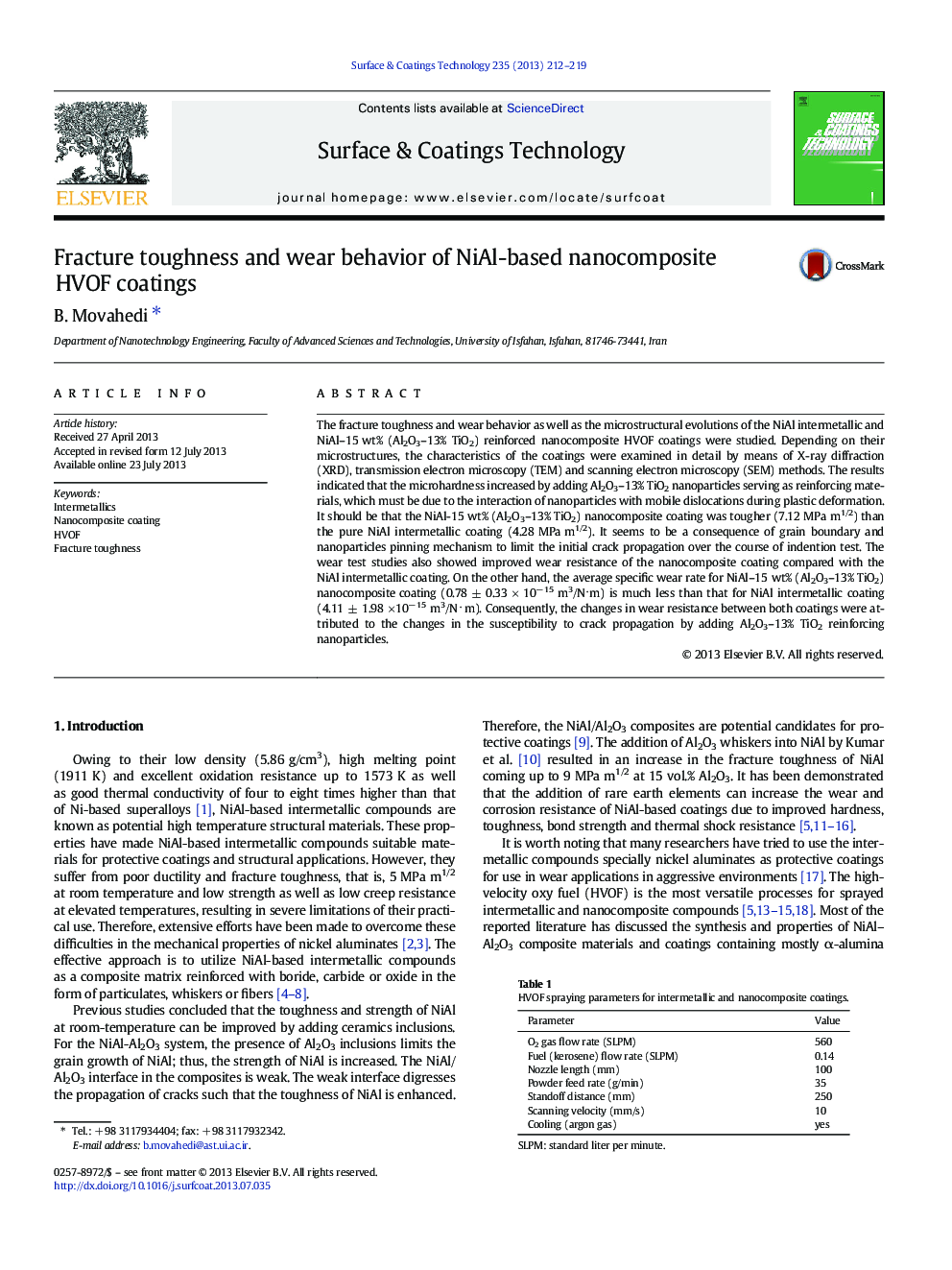| Article ID | Journal | Published Year | Pages | File Type |
|---|---|---|---|---|
| 8029172 | Surface and Coatings Technology | 2013 | 8 Pages |
Abstract
The fracture toughness and wear behavior as well as the microstructural evolutions of the NiAl intermetallic and NiAl-15 wt% (Al2O3-13% TiO2) reinforced nanocomposite HVOF coatings were studied. Depending on their microstructures, the characteristics of the coatings were examined in detail by means of X-ray diffraction (XRD), transmission electron microscopy (TEM) and scanning electron microscopy (SEM) methods. The results indicated that the microhardness increased by adding Al2O3-13% TiO2 nanoparticles serving as reinforcing materials, which must be due to the interaction of nanoparticles with mobile dislocations during plastic deformation. It should be that the NiAl-15 wt% (Al2O3-13% TiO2) nanocomposite coating was tougher (7.12 MPa m1/2) than the pure NiAl intermetallic coating (4.28 MPa m1/2). It seems to be a consequence of grain boundary and nanoparticles pinning mechanism to limit the initial crack propagation over the course of indention test. The wear test studies also showed improved wear resistance of the nanocomposite coating compared with the NiAl intermetallic coating. On the other hand, the average specific wear rate for NiAl-15 wt% (Al2O3-13% TiO2) nanocomposite coating (0.78 ± 0.33 Ã 10â 15 m3/Nâ
m) is much less than that for NiAl intermetallic coating (4.11 ± 1.98 Ã 10â 15 m3/N â
 m). Consequently, the changes in wear resistance between both coatings were attributed to the changes in the susceptibility to crack propagation by adding Al2O3-13% TiO2 reinforcing nanoparticles.
Related Topics
Physical Sciences and Engineering
Materials Science
Nanotechnology
Authors
B. Movahedi,
